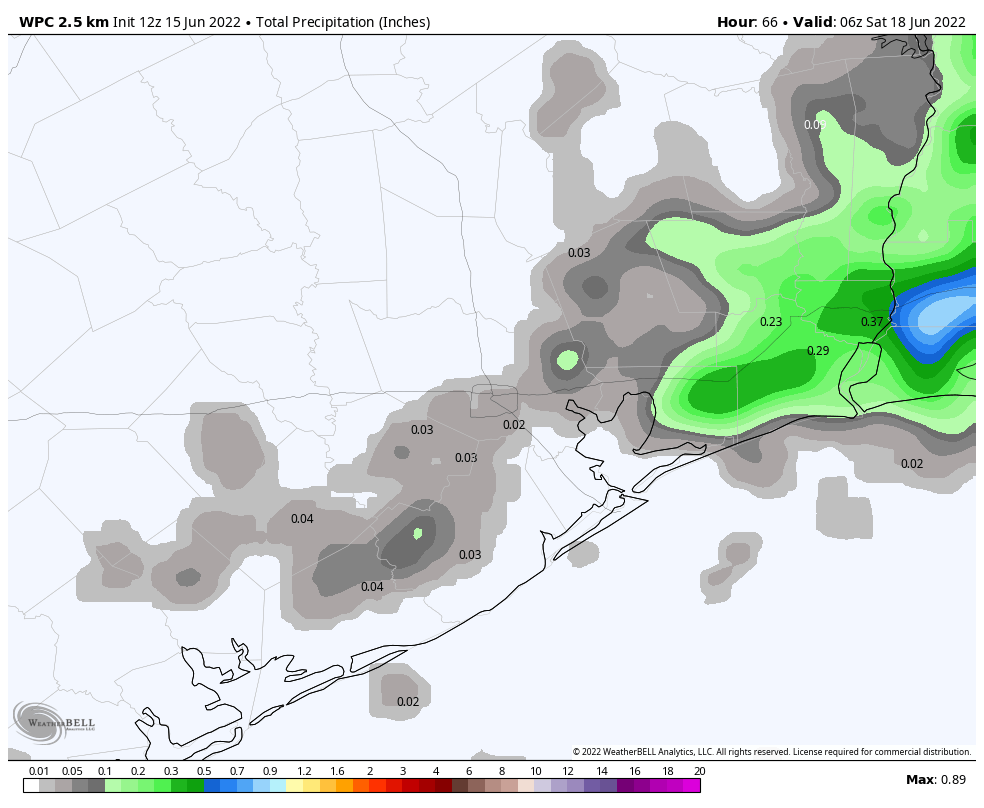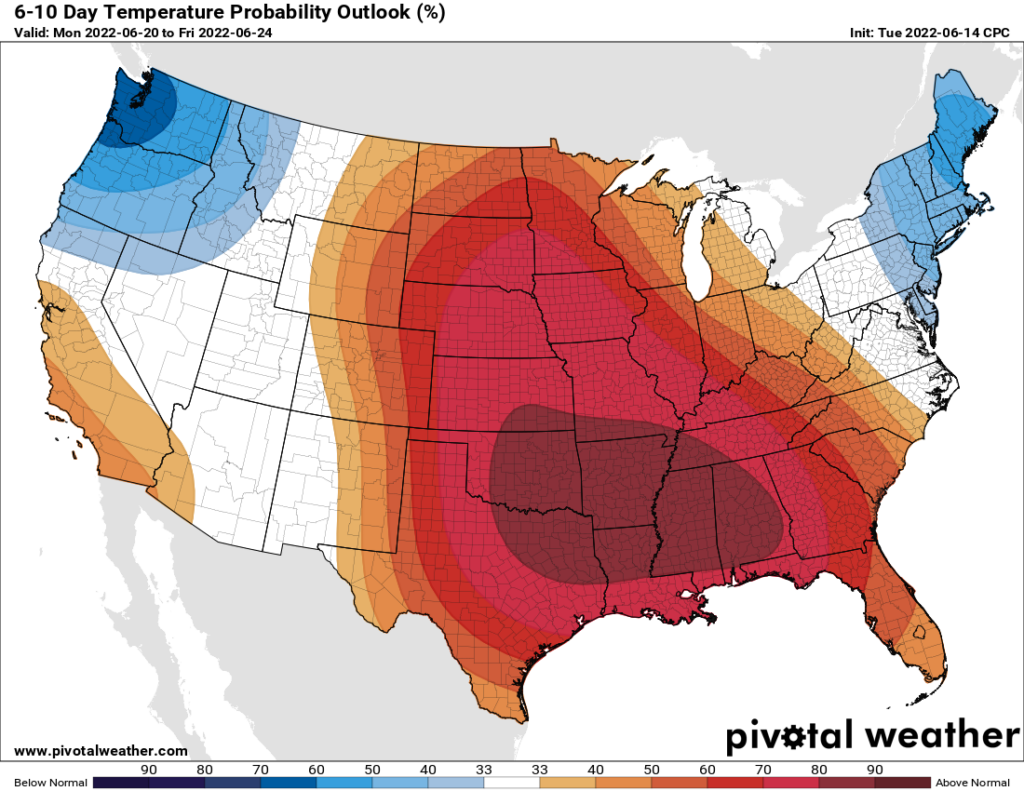Good morning. This is Eric, and I’m back from an extended weekend at a family reunion in southeastern Missouri. I must say that I enjoyed one day with a cool morning last Friday, with a daily high in the low 80s, before high pressure pushed temperatures there into the upper 90s. So my break from the heat was short-lived, but still better than nothing. As for Houston’s weather, well, not much has changed since I left town nearly a week ago. And not much is going to change in the next week. After that? Maybe. But just maybe.
Wednesday
High pressure anchored over the southeastern United States will still be the driving factor for our weather for awhile, but high temperatures today should “only” get into the mid-90s for much of the region. Skies will be mostly sunny, with light southerly winds at 5 to 10 mph. Overnight lows won’t fall much below 80 degrees, at all, for inland areas. The coast will remain above 80 degrees.

Thursday and Friday
Most of the Houston region has yet to record even a scintilla of rainfall during the month of June and that’s unlikely to change on Thursday and Friday. However, as atmospheric moisture levels jump a bit, there will have about a 20 percent chance of rain showers each day, primarily during the afternoon hours due to the sea breeze. I think there’s even a slight chance that a few of these showers will pulse up and, however briefly, drop some heavier rain for a very few lucky areas. Will you win the rainfall lottery? Otherwise, expect highs in the mid- to upper-90s on both days with mostly sunny skies.
Saturday and Sunday
Both weekend days will be sunny and hot, with temperatures in the upper 90s. If you are out and about celebrating Juneteenth on Sunday, please do take precautions both from the heat and sunshine. We are very nearly at the longest day of the year (June 21), which means the Sun is the highest in the sky. As a matter of fact, between 1 and 2 pm during the afternoon, the Sun reaches an altitude of 84 percent, meaning those solar rays are passing through almost no atmosphere before they reach your skin. (If you’re curious, the Sun’s peak altitude during the shortest winter day in Houston is just 37 percent).

Next week
The overall pattern does not change much during the first half of next week, I am afraid. But after that point there is the potential for an increase moisture to move in from the Gulf of Mexico, and possibly raise the chances of rain from 0 to something measurable. Temperatures still look very hot, with highs in the upper 90s most likely.
It’s raining in League City/South Shore right now. I don’t expect it last much longer, but still…
Bring on the solstice. I know peak summer is still to come, but at least the amount of sunlight, albeit ever so incrementally, starts decreasing. It’s the only saving grace early in the wretched summers here.
I always thought the 1st Sunday in November was the longest day. Because 25 hours?
By longest day they mean most hours of daylight.
The Winter Solstice is December 21
Well played.
Eric, slight typo with the word “have”: “However, as atmospheric moisture levels jump a bit, there will have about a 20 percent chance of rain showers each day, primarily during the afternoon hours due to the sea breeze.”
I’ve seen the sun’s altitude expressed in degrees, which should be about 84 degrees above the southern horizon on the solstice (our lat. less the latitude of Tropic of Cancer), but not as a percentage.
I truly enjoy the posts; glad to see you back home in Space City. Cheers, cCc.
Eric, why percentages and not degrees when measuring the Sun’s angle?
And when did this term come into common usage and supplant “degrees?”
Most likely because degrees of elevation might be confused with degrees of temperature.
Eric, where in SE MO? My wife has family in Bonne Terre.
I can’t understand why the sun is not coming through as much atmosphere because it is higher in the sky. I thought that the atmosphere completely surrounds the earth and is rather uniform in density.
June is usually one of the rainiest months, so odd to see it so dry. The spring, from April through June usually gets a good bit of rain.
It distance. Over head the atmosphere is only a few dozen miles thick. Along the horizon its hundred to thousands of miles thick.
Keith has it basically right. Just think about how if you approach anything at an angle, you must pass through more distance to get through it, as opposed to approaching it directly perpendicular.
And the Blowtorch season begins!!
Bring on the heat!
Sun’s rays penetrating almost NO atmosphere??? Not quite right. If true we’d have a hard time getting the oxygen we need…… Surely an editorial glitch. But it may merit correction for the sake of simple truth vs falsehood.
Otherwise, thank you for good reporting on our Houston and SE Texas weather.
Pedantics. When the sun is at an incident angle the light passes through significant more atmosphere than when the rays are more uniformly perpendicular. He’s not saying there’s literally no atmosphere, just that the comparative amount might as well be zero.
And this Sunday being Father’s Day is chopped liver?